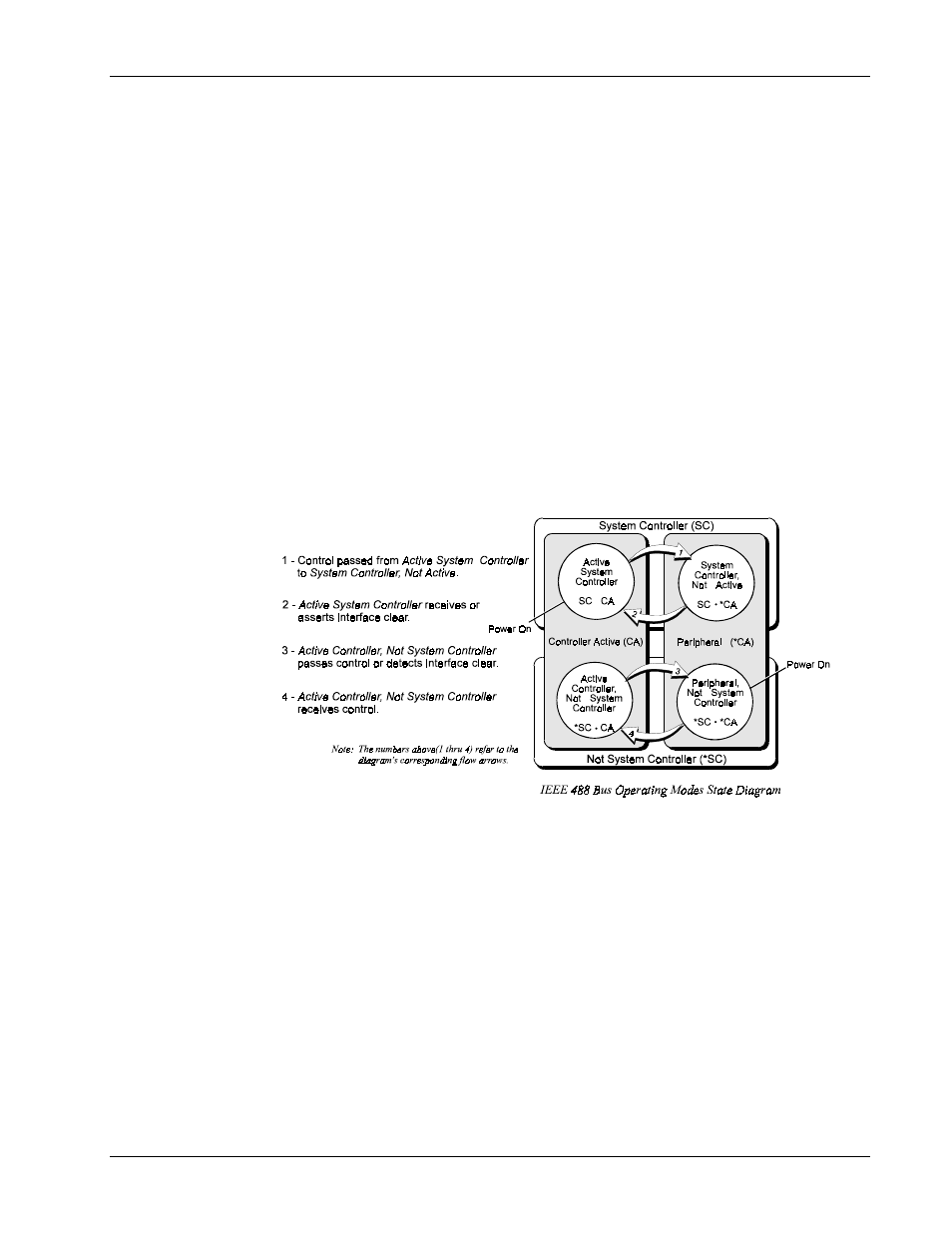Operating mode transitions – Measurement Computing Personal488 rev.3.0 For DOS & Windows 3.Xi User Manual
Page 194

II. SOFTWARE GUIDES - 9. Driver488/SUB
9I. Operating Modes
Personal488 User’s Manual, Rev. 3.0
II-179
Controller controls the Interface Clear (
IFC
) and Remote Enable (
REN
) bus management lines. By
asserting Interface Clear, the System Controller forces all other bus devices to stop their bus operations,
and regains control as the Active Controller.
Operating Mode Transitions
The System Controller is initially the Active Controller. It can, if desired, Pass Control to another
device and thereby make that device the Active Controller. Notice that the System Controller remains
the System Controller even when it is not the Active Controller. Of course, the device to which control
is passed must be capable of taking the role of Active Controller. It would make no sense to try to pass
control to a printer. Control should only be passed to other computers that are capable, and ready, to
become the Active Controller. Note further that there must be exactly one System Controller on the
IEEE 488 bus. All other potential controllers must be configured as Peripherals when they power up.
The state diagram which follows, shows the relationships between the various operating modes. The
top half of the state diagram shows the two operating states of a System Controller. At power on, it is
the Active Controller. It directs the bus transfers by sending the bus commands mentioned previously.
It also has control of the Interface Clear and Remote Enable bus lines. The System Controller can
pulse Interface Clear to reset all of the other bus devices.
Furthermore, the System Controller can pass control to some other bus device and thereby become a
Peripheral to the new Active Controller. If the System Controller receives control from the new Active
Controller, then it once again becomes the Active Controller. The System Controller can also force the
Active Controller to relinquish control by asserting the Interface Clear signal.
The bottom half of the state diagram shows the two operating states of a Not System Controller device.
At power on, it is a Peripheral to the System Controller which is the Active Controller. If it receives
control from the Active Controller, it becomes the new Active Controller. Even though it is the Active
Controller, it is still not the System Controller. The System Controller can force the Active Controller
to give up control by asserting Interface Clear. The Active Controller can also give up control by
Passing Control to another device, which may or may not be the System Controller.
In summary, a bus device is set in hardware as either the sole System Controller in the system, or as a
non-System Controller. At power on, the System Controller is the Active Controller, and the other
devices are Peripherals. The System Controller can give up control by passing control, and can regain
control by asserting Interface Clear, or by receiving control. A Peripheral can become the Active
Controller by receiving control, and can give up control by Passing Control, or on detecting Interface
Clear.
